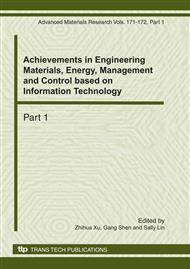p.769
p.773
p.778
p.783
p.787
p.791
p.795
p.799
p.804
Heat Transfer Characteristic Analysis of Confined Impinging Jet Cooling System with Micro-Scale Round Nozzles
Abstract:
In order to investigate the heat transfer of confined impinging jet with tiny size round nozzle, a bakelite laminate was used as the heat transfer surface of simulated chip. The thermocouples were mounted symmetrically along the diagonal of the laminate to measure the temperature distribution of the surface. The parameters such as Reynolds number (Re) and ratio of height-to-diameter were changed to investigate the radial distribution of Nu and the characteristics of heat transfer in stagnant section. The results show that hear transfer coefficient at stagnation point is maximal. It is decreased with the increases of the radial jet distance, but increased with Re and impinging height. Moreover, the effect of single-nozzle type is stronger than that of multi-nozzle type in the cases of same air flow. These studies will give a way for the application of air jet impingement in the electronics chip cooling.
Info:
Periodical:
Pages:
799-803
Citation:
Online since:
December 2010
Authors:
Price:
Сopyright:
© 2011 Trans Tech Publications Ltd. All Rights Reserved
Share:
Citation:


